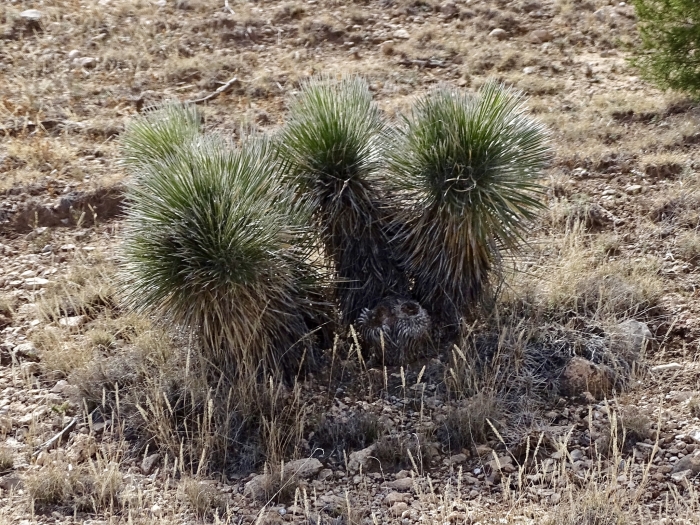Soaptree Yucca
(Yucca elata)
Soaptree Yucca (Yucca elata)
/
/

CK Kelly
CC BY 4.0
Image By:
CK Kelly
Recorded By:
Copyright:
CC BY 4.0
Copyright Notice:
Photo by: CK Kelly | License Type: CC BY 4.0 | License URL: http://creativecommons.org/licenses/by/4.0/ | Rights Holder: CK Kelly | Publisher: iNaturalist | Date Created: 2018-11-30T18:31:32Z |













































































Estimated Native Range
Summary
Yucca elata, commonly known as Soaptree Yucca, is an evergreen succulent native to the Chihuahuan Desert and Sonoran Desert, as well as semi-desert grasslands in the Southwestern USA and Northern Mexico. It typically grows from 1.2 to 4.5 meters tall with a sparsely branched trunk that is brown and cylindrical, often with holes from yucca moth larvae. The leaves are long, narrow, and flexible, forming a dense rosette around the trunk. The white, bell-shaped flowers are showy and grow in a dense cluster on a slender stem at the apex of the plant, each flower 32–57 mm long, creamy white, and sometimes tinged with pinkish or greenish hues. Flowering usually occurs from late spring to early summer, but the plant does not bloom every year. The fruit is a dry capsule, maturing to brown in summer and splitting into three sections to release black seeds.
Soaptree Yucca is valued for its striking appearance and low maintenance requirements, making it a popular choice for xeriscaping and desert gardens. It is also used as an accent plant in rock gardens and modern landscapes. This yucca species is very cold-hardy and thrives in full sun with low or very low water needs, preferring well-drained soils. While it is generally pest-free, it can occasionally suffer from yucca moth infestations, which are typically not harmful to the plant’s overall health.CC BY-SA 4.0
Soaptree Yucca is valued for its striking appearance and low maintenance requirements, making it a popular choice for xeriscaping and desert gardens. It is also used as an accent plant in rock gardens and modern landscapes. This yucca species is very cold-hardy and thrives in full sun with low or very low water needs, preferring well-drained soils. While it is generally pest-free, it can occasionally suffer from yucca moth infestations, which are typically not harmful to the plant’s overall health.CC BY-SA 4.0
Plant Description
- Plant Type: Tree, Shrub, Succulent
- Height: 6-10 feet
- Width: 8-10 feet
- Growth Rate: Moderate
- Flower Color: White, Cream
- Flowering Season: Spring
- Leaf Retention: Evergreen
Growth Requirements
- Sun: Full Sun
- Water: Low, Very Low
- Drainage: Fast
Common Uses
Bee Garden, Bird Garden, Butterfly Garden, Drought Tolerant, Edible*Disclaimer: Easyscape's listed plant edibility is for informational use. Always verify the safety and proper identification of any plant before consumption., Erosion Control, Fire Resistant, Fragrant, Hummingbird Garden, Low Maintenance, Rabbit Resistant, Rock Garden, Showy Flowers, Street Planting
Natural Habitat
Native to the Chihuahuan Desert, Sonoran Desert, and semi-desert grasslands
Other Names
Common Names: Palmella, Soaptree, Soapweed, Soapweed Yucca, Seifen-Palmlilie, Izote Forrajero
Scientific Names: , Yucca elata, Yucca angustifolia var. elata,
GBIF Accepted Name: Yucca elata (Engelm.) Engelm.